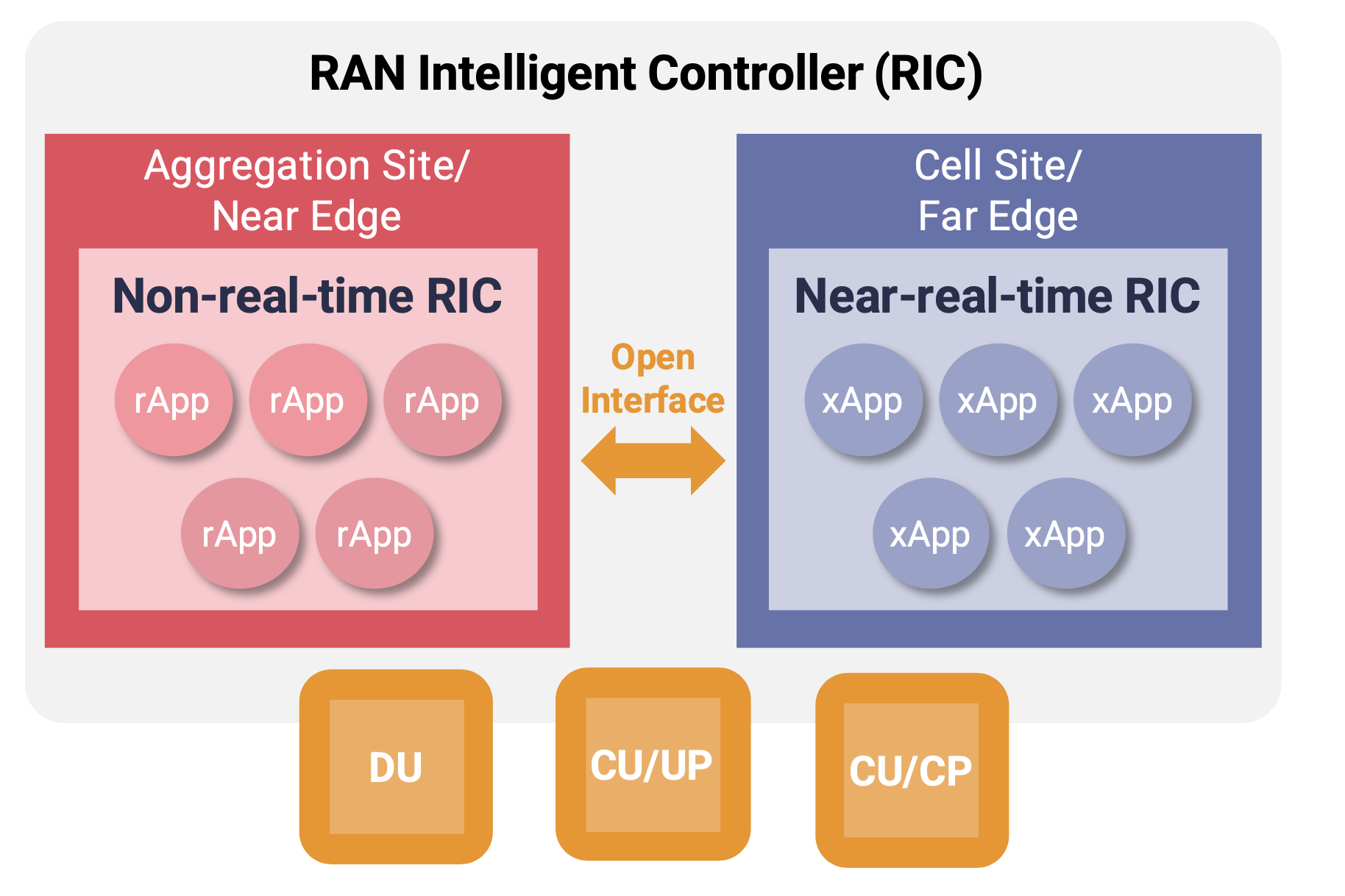
10 RAN vendors: challengers, newcomers and heavyweights
As the RAN ecosystem evolves, it becomes increasingly difficult to track the different vendor deployments and their individual product offerings. In this article, we highlight ten different companies that offer RAN solutions.
At STL Partners, we simplify this with our interactive NFV Vendor Landscape Tool and track ongoing deployments with our NFV Deployment Tracker. For more information, please visit our Telco Cloud hub and have a look at our NFV Vendor Landscape tool, which we are continuously expanding on an ongoing basis.
ASOCS
HQ: Rosh Ha’ayin, Israel
Website: www.asocscloud.com
Date Founded: 2003
Number of Employees: 50-100 (2018)
ASOCS develops end-to-end cellular vRAN solutions, delivering 4G and 5G connectivity via their core product, Cyrus 2.0. The single software solution is positioned to offer flexibility, high network reliability and low latency solutions directly to enterprises via ASOCS’s virtualised private network hosting capabilities or indirectly, on behalf of mobile network operators. In addition, ASOCS performs Cloud-RAN wide-scale deployment testing and development projects with mobile operators, including that of China Mobile. ASOCS is part of several partnerships including Cisco’s Open vRAN Ecosystem which helps accelerate and provides fully virtualised, NFC-compatible virtual Base Station solutions for both in-building wireless and macro-networks.
STL (Sterlite Technologies Ltd), a network solutions provider and integrator has recently invested and partnered with ASOCS to deliver full stack solutions to enterprise and telco customers. The goal is to integrate STL’s services and system integration expertise with ASOCS’s extensive vRAN 5G portfolio to facilitate a new generation of best in class virtualisation solutions for radio.
Airspan
HQ: Florida, United States
Website: www.airspan.com
Date Founded: 1998
Number of Employees: 800 (2020)
Airspan is a 4G & 5G network densification equipment and software manufacturer, with products ranging from network hardware such as RRUs and DUs, to integrated software platforms such as OpenRANGE SW. The products exploit technologies including mmWave, Sub-6 GHz, Massive MIMO and Open vRAN architectures. Together, Airspan offers end-to-end flexible RAN solutions for projects including rural network deployment, indoor connectivity, fixed access, backhaul and IoT applications. With the roll out of 5G, Airspan aims to offer its cloud-native open architecture solutions to internet service providers, carriers, and enterprises, which it claims will reduce CAPEx and OPEx significantly.
Airspan has been a key player in the Open RAN environment. The company has recently partnered with Altiostar Networks, with hopes of leveraging their combined vRAN and intelligent radio solutions to accelerate the commercialisation of Open RAN 4G and 5G platforms. The partnership has seen recent success. In collaboration with Rakuten, the duo has managed to connect thousands of sites across Japan, to form the first commercial cloud-scale web-based virtualised network. Claiming to champion innovation, unique network features and improved economics, it will be interesting to observe how the duo will continue to challenge the status quo.
Altiostar
HQ: Boston, United States
Website: www.altiostar.com
Date Founded: 2011
Number of Employees: 220 (2020)
Altiostar offers 4G and 5G open virtualised RAN software solutions that supports open interfaces and disaggregated hardware, facilitating a best of breed multi-vendor web-scale network. The solution supports indoor and outdoor massive MIMO, macro and small cells, enables interference management and dual connectivity to improve network performance. Altiostar has been deployed globally, with significant success in Japan, where the company supported the world’s first cloud native mobile network with Rakuten.
Looking to enable faster deployment of new 5G services in addition to greater modularity, agility and scalability, DISH has chosen Altiostar as a partner to deliver its cloud native O-RAN compliant nationwide 5G network – the first of its kind in the United States. A large focus also has been in facilitating greater network utilisation and orchestration capabilities. Incorporating AI and machine learning, the O-RAN architecture brings end-to-end automation and zero-touch commissioning to facilitate an increasingly scalable network.
Casa Systems
HQ: Massachusetts, United States
Website: www.casa-systems.com
Date Founded: 2003
Number of Employees: 950
Casa Systems is a 5G equipment and software solutions manufacturer that offers end-to-end solutions for next generation centralized, distributed and virtualised architectures for cable, broadband, fixed-line broadband and wireless networks. Their APEX RAN solutions support licensed LTE bands and CBRS which provide coverage for residences, enterprises, and public venues. These solutions integrate with Casa’s Axyom Software platforms which manages user plane traffic and capabilities for equipment clusters, in addition to VNF integration and real-time location services.
Casa has a large focus on innovation, particularly now with 5G, where the company has developed high powered small cells to overcome capacity and coverage challenges in dense urban areas, which it has claims can reduce 5G deployment costs significantly. An example of this is the recent unveiling of Casa’s Apex RAN 5G Metro solution which is positioned to be effective at meeting coverage and capacity challenges in areas where large numbers of NR and LTE devices are present. The technology was showcased at the Mobile World Congress 2019 in Barcelona.
Ericsson
HQ: Stockholm, Sweden
Website: www.ericsson.com
Date Founded: 1876
Number of Employees: 99, 417 (2019)
Ericsson’s RAN portfolio consists of basebands, radio processors and a radio access processing platform, Ericsson Radio System (ERS). The organisation supports end-to-end deployment solutions for both NSA and SA 5G deployment, where the latter can be performed remotely through ERS. Investing significantly in the integration of artificial intelligence (AI) in its portfolio of solutions, Ericsson believes AI can be utilized to support operators in three main performance improvement domains: network design, network optimization and RAN algorithms.
The company has been involved in numerous large-scale 5G RAN deployments in major economies including Germany, Oman, and the United Kingdom, competing closely with other large-scale vendors including the likes of Huawei. Most recently, Ericsson has made initial 5G deployments for Orange Spain in both Madrid and Barcelona, with plans to extend across the nation over a four-year period. On top of this, Ericsson continues to supply Orange Spain with a 5G Evolved Packet Core to support 5G New Radio NSA including the control plane, user plane and policy network functions.
Intel
HQ: California, United States
Website: www.intel.com
Date Founded: 1968
Number of Employees: 110,800 (2020)
Intel’s portfolio for wireless 5G deployment solutions is largely centered around its Intel FGPA suite, which consists of a wide variety of configurable embedded SRAM, high-speed transceivers, logic blocks and routing. The equipment contains built-in intellectual property (IP) which, when paired with Intel’s Quartus Prime Design Software, allows operators to test different CRAN architecture implementation scenarios, identifying the most cost-effective solutions virtually, at lowered risk.
More recently, Intel has been in partnership with VMWare, to support MNOs in the rollout of both existing LTE and future 5G networks, through its integrated software platform. With this collaboration, the two aim to offer communication service providers, reduced development cycles and scale across multiple designs. In addition to this, Intel has recently announced another strategic ecosystem partnership with companies including Altiostar, Telefonica and several others to foster the development of Open RAN 4G and 5G technologies. Utilising Intel’s FlexRAN platform and its Xeon processor-based servers, Intel will be supporting Telefonica’s 4G and 5G Open RAN trials in several countries towards the end of this year, and potentially paving a new dimension of virtualised 5G network delivery.
Nokia
HQ: Espoo, Finland
Website: www.nokia.com
Date Founded: 1865
Number of Employees: 98,322 (2020)
Nokia’s AirScale Radio Access portfolio supports all radio access technologies including both NSA and SA 5G networks, offering cellular service providers (CSPs), end-to-end network deployment solutions. These solutions include AirSpan Cloud RAN which virtualises both the central and distributed 5G unit, promoting both flexible scalability, capacity, and real time cloud-based processing capabilities.
Nokia is a major contributor in several partnerships including the O-RAN Alliance, 3GPP, Linux Foundation’s ONAP and ETSI’s Multi-access Edge Computing (MEC) initiative, where the Finnish company supports the research and development of emerging network technologies. More recently, Nokia has partnered with AT&T to co-create the RAN Intelligent Controller (RIC) based on O-RAN architecture and publishing in open source. The RIC platform will enable increased network optimization capabilities through policy-guided, closed loop automation.
Over the past year, Nokia has partnered with Intel to successfully trial the delivery of the first over-the-air data session in a fully virtualised RAN trial environment. Utilising Nokia’s AirScale all-in-cloud base station, and subsequently, virtual baseband processing, with Intel’s processor-based platforms, the trial represents a significant step forward in developing scalable 5G network solutions.
Parallel Wireless
HQ: New Hampshire, United States
Website: www.parallelwireless.com
Date Founded: 2012
Number of Employees: 402 (2019)
Parallel Wireless’ OpenRAN solutions offer end-to-end virtualised network deployment services. Combined with software-defined hardware, the company allows mobile operators to replace legacy 2G, 3G or 4G systems with an integrated fully virtualised OpenRAN system, that can be centrally monitored through Parallel Wireless’ network software. This enables capabilities ranging from network intelligence including network orchestration, analytics, and optimisation for faster time-to-market deployments via the platform’s OpenRAN controller.
Parallel Wireless has been active in the Open RAN space, where collaborations now exist with major mobile operators including Etisalat, Vodafone, and Telefonica. With Parallel Wireless’ “All G” open RAN solution, the company claims to facilitate the converging of all 2G,3G,4G and 5G into one unified software platform, removing the need to maintain legacy networks dedicated to a single technology. Similarly, the company has been selected by Orange to aid in a multi-country program to extend existing coverage across the Central African Republic. In this partnership, Orange and Parallel Wireless aims to implement IDEAL (Include Digital In Every African Life), a program positioned to support connecting the unconnected.
Radisys
HQ: Oregon, United States
Website: www.radisys.com
Date Founded: 1987
Number of Employees: 1000+ (2020)
Radisys has been active in the Open RAN space. Focusing on the O-RAN Alliance, the American telecoms solutions provider has been in active collaboration with China Mobile and AT&T to define the 5G NR stack reference architecture, where the company has been the first contributor to this effort, by sharing its Open 5G Software seed code. This will help accelerate the O-RAN ecosystem and enable the delivery of open APIs and open architectures that mobile operators can leverage to speed up their delivery of 5G networks. The code has been at the foundations of several showcases demonstrated so far.
More recently, Radisys in partnership with KDDI Research, has successfully demonstrated a RAN slicing showcase involving different traffic steams with different latency requirements on a single RU connected to multiple CUs/DUs in a disaggregated network topology. The technology will become a key enabler in applications that require high data speeds and throughput, yet maintaining low latency, for use cases such as augmented reality, IoT driven connectivity and critical services.
Samsung
HQ: Seoul, South Korea
Website: www.samsung.com
Date Founded: 1938
Number of Employees: 309,630 (2018)
Samsung is an active member of the Open RAN community, participating in large-scale deployment tests, conferences and most recently, commercialising a new carrier-grade, fully-virtualised 5G RAN solution. The Korean tech conglomerate’s emphasis on developing a vendor agnostic ecosystem has been well-received as it leads several large-scale partnerships and deals with communications giants including Verizon and AT&T.
Mid 2020, Samsung won a $6.6 billion dollar deal to supply network equipment to American CSP, Verizon, a project lasting approximately 5 years and would equate to about 3.4 percent of Samsung’s 2019 group revenues. This opportunity is a heavy blow to Nokia, who have historically supplied Verizon with almost 50% of their RAN solutions. As US-China tensions rise, European vendors receive an upper hand in filling the gaps left by their Chinese counterparts, however, missed opportunities like these will continue to exacerbate the divide in the vendor community. Despite recent success, it comes at a surprise that Samsung has yet been called to support many other large-scale American network deployments including that of T-Mobile’s massive 5G network upgrade. This does not prove to be an issue, as the Korean conglomerate continues to support deployments elsewhere including Telus in Canada, KDDI in Japan and Spark in New Zealand.
On other news, Samsung has recently announced a successful collaboration with AT&T to demonstrate an open-interface approach to delivering 5G deployments. The solution that leverages on the enhanced Common Public Radio Interface (eCPRI) and Samsung’s network hardware paves the new possibilities CSP-vendor partnerships can achieve. As Samsung takes a collaborative approach in developing its open RAN technologies, it will be interesting to see how the industry, especially vendors, may adopt their strategies to capture a larger 5G market.
Read more about telco cloud
Telco cloud insights pack
This document will provide you with the latest insights from our research and consulting work, including some extract of our Telco Cloud Manifesto 2.0, and our latest analysis on open RAN
Telco Network Energy Efficiency: The Role of the RAN in Future Energy Consumption
With sustainability increasingly front of mind for stakeholders, operators are looking to the RAN for energy saving solutions to support their journey to net zero. This article details both the need for such solutions and what is on offer in the current marketplace.
1&1 Drillisch AG: forging ahead with Open RAN
The greenfield German telecoms operator 1&1 Drillisch AG announced plans to speed up the deployment of its own Open RAN technology, aiming to provide at least 1,000 5G base stations by 2022. But it will probably take until the beginning of 2023 before the network can go live and existing customers can be migrated to its own infrastructure.
What is the RIC, and why should CSPs care?
As CSPs move towards O-RAN, the RAN Intelligent Controller (RIC) will be a key component in enabling transformation. In this article we explore what the RIC is, how far along the industry is with adoption, and how the RIC will benefit CSPs.




